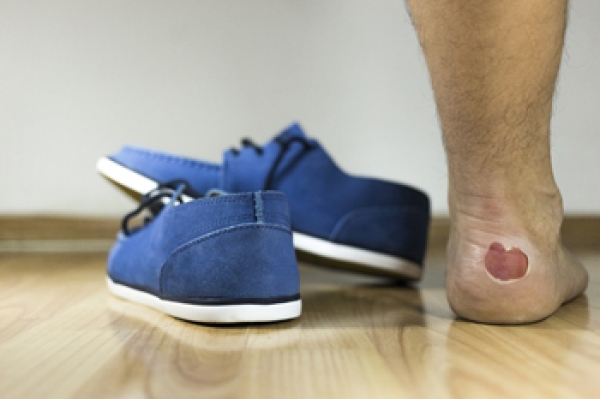 One of the main reasons blisters on the feet may develop is from friction that may typically come from wearing shoes and socks that are too tight. They appear as a small area filled with fluid, which is a natural protectant of the skin, and will commonly develop as a result of an injury or infection that has occurred. When a blister develops on the foot, pain and discomfort will generally accompany this ailment and can possibly be treated by placing a cover over it while wearing shoes. There may be several additional reasons why blisters may form on the feet. These may include being exposed to freezing temperatures, which may cause frostbite, or the opposite may be true when the skin endures an extreme sunburn. If you have an allergic reaction to an insect bite or to a specific chemical, unsightly blisters may form to protect the skin as the healing process occurs. If you are experiencing blisters on the feet, it is suggested to speak with a podiatrist for information about treatment options.
One of the main reasons blisters on the feet may develop is from friction that may typically come from wearing shoes and socks that are too tight. They appear as a small area filled with fluid, which is a natural protectant of the skin, and will commonly develop as a result of an injury or infection that has occurred. When a blister develops on the foot, pain and discomfort will generally accompany this ailment and can possibly be treated by placing a cover over it while wearing shoes. There may be several additional reasons why blisters may form on the feet. These may include being exposed to freezing temperatures, which may cause frostbite, or the opposite may be true when the skin endures an extreme sunburn. If you have an allergic reaction to an insect bite or to a specific chemical, unsightly blisters may form to protect the skin as the healing process occurs. If you are experiencing blisters on the feet, it is suggested to speak with a podiatrist for information about treatment options.
Blisters are prone to making everyday activities extremely uncomfortable. If your feet are hurting, contact Dr. Joshua David Scoll of Pennsylvania. Our doctor can provide the care you need to keep you pain-free and on your feet.
Foot Blisters
Foot blisters develop as a result of constantly wearing tight or ill-fitting footwear. This happens due to the constant rubbing from the shoe, which can often lead to pain.
What Are Foot Blisters?
A foot blister is a small fluid-filled pocket that forms on the upper-most layer of the skin. Blisters are filled with clear fluid and can lead to blood drainage or pus if the area becomes infected.
How Do Blisters Form?
Blisters on the feet are often the result of constant friction of skin and material, usually by shoe rubbing. Walking in sandals, boots, or shoes that don’t fit properly for long periods of time can result in a blister. Having consistent foot moisture and humidity can easily lead to blister formation.
Prevention & Treatment
It is important to properly care for the affected area in order to prevent infection and ease the pain. Do not lance the blister and use a Band-Aid to provide pain relief. Also, be sure to keep your feet dry and wear proper fitting shoes. If you see blood or pus in a blister, seek assistance from a podiatrist.
If you have any questions, please feel free to contact one of our offices located in Philadelphia, Bensalem, and Fairless Hills, PA . We offer the newest diagnostic and treatment technologies for all your foot care needs.

